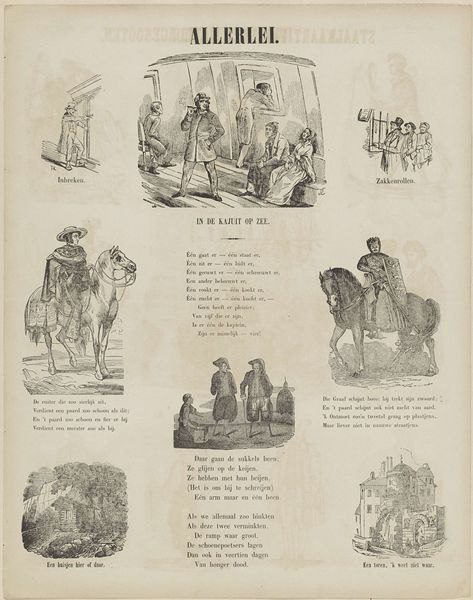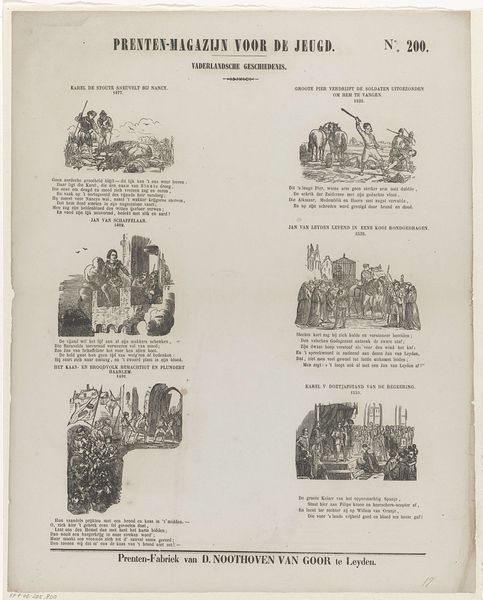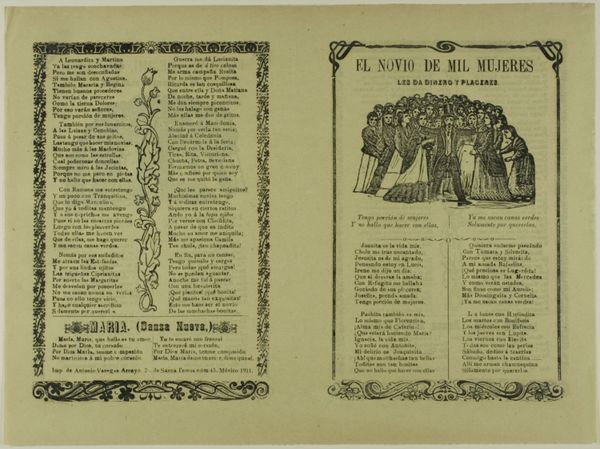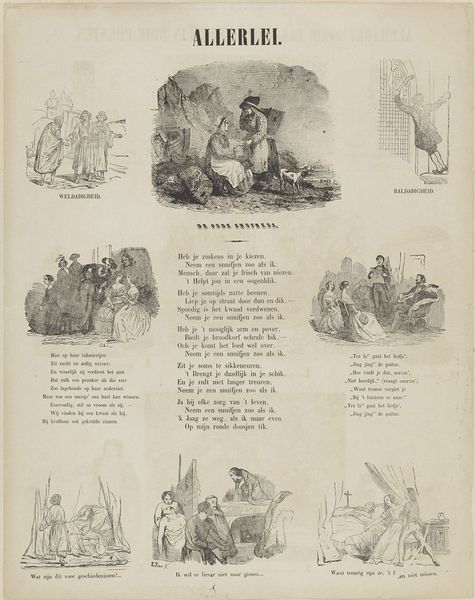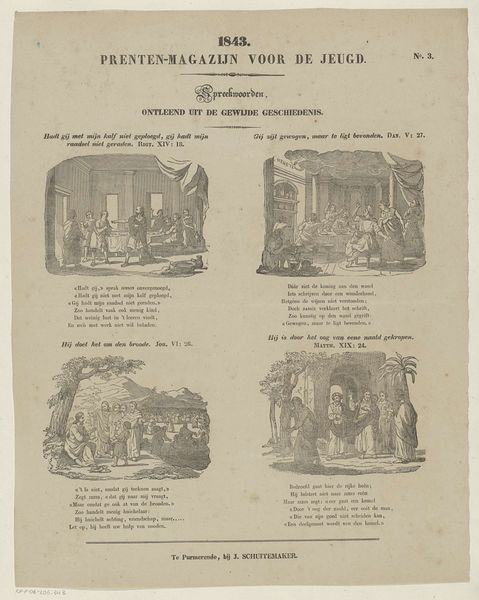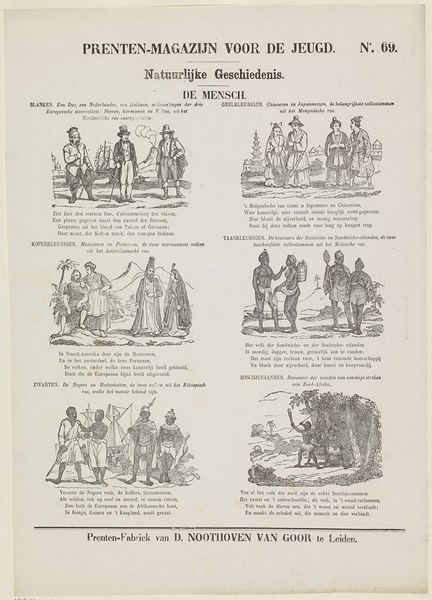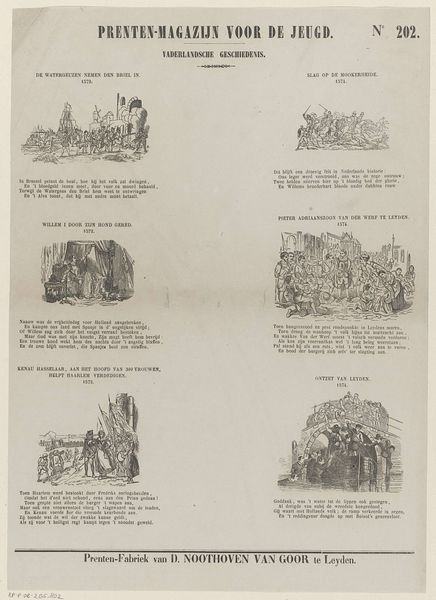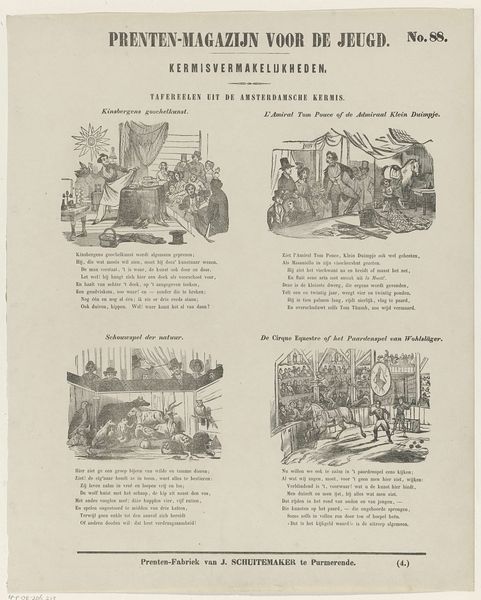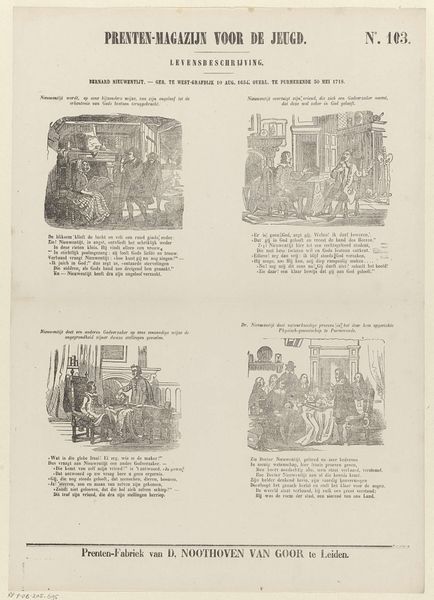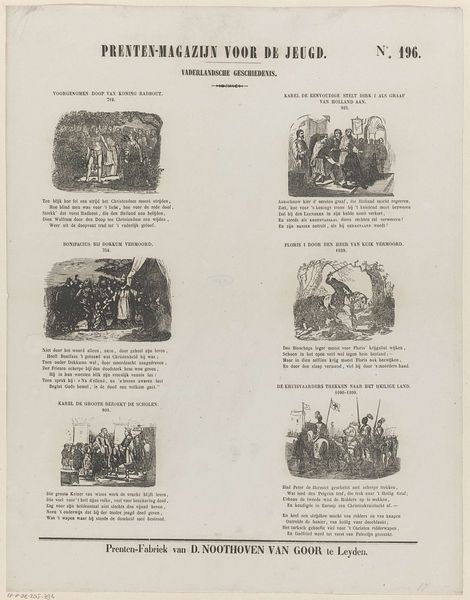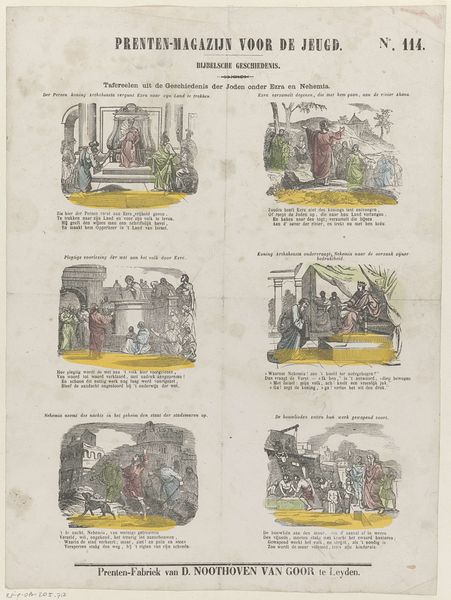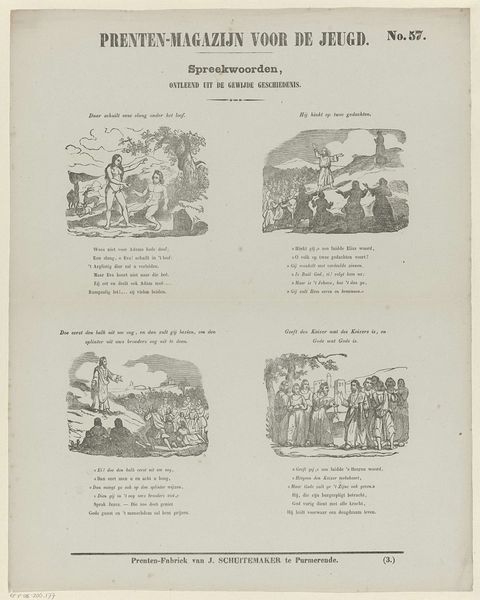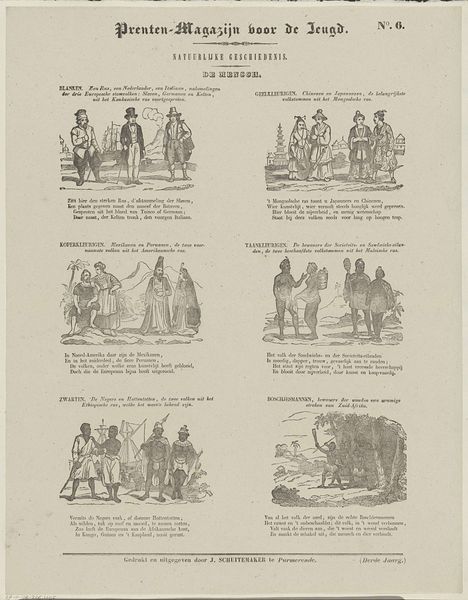
Broadsheet relating to elegant and pretentious calaveras (skeletons) that become decayed and fetid 1895 - 1905
0:00
0:00
Dimensions: Sheet: 15 3/4 × 11 13/16 in. (40 × 30 cm)
Copyright: Public Domain
This broadsheet, likely created around 1900 by J. Cortés, presents us with skeletons, or calaveras, engaging in everyday activities. Dominating the scene are vendors and buyers, all rendered as grinning skeletons, a stark reminder of mortality amidst the bustle of life. These calaveras resonate deeply with the medieval European "Danse Macabre," where death dances with all strata of society. Consider Holbein's "Dance of Death" woodcuts. Here, death is an ever-present companion. Similarly, in this broadsheet, death is not a distant specter but an active participant in daily life. The grinning skulls, far from being morbid, possess a certain vitality. This echoes the ancient Roman "memento mori" tradition, where symbols of mortality served as reminders to seize the day. The image taps into our collective subconscious, reminding us of the fleeting nature of existence. These calaveras, though macabre, prompt reflection on life’s transience. The cyclical nature of life and death is emphasized, creating a visual echo across centuries and continents.
Comments
No comments
Be the first to comment and join the conversation on the ultimate creative platform.
